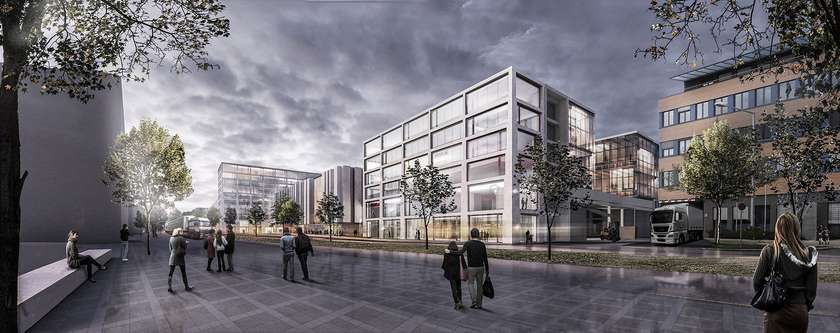Idea by
Blaž Babnik Romaniuk
Obrat d.o.o
Call for ideas 2019
Production makes the city
Production makes the city
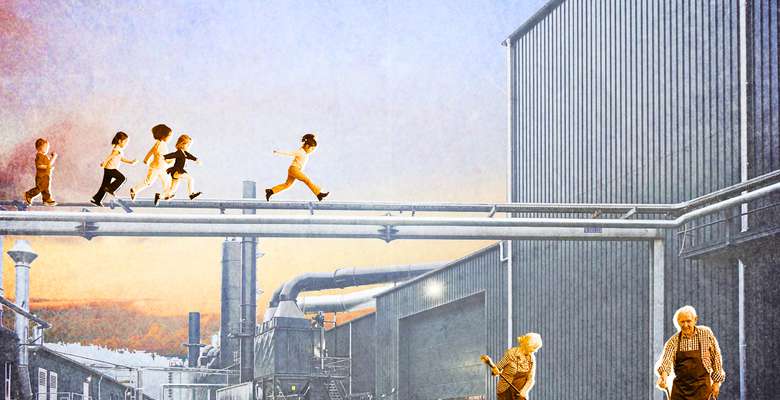
- Systemic changes
Social and environmental issues are demanding of us to preserve and reintroduce productive activities in the cities. The question: how the new urban and architectural typology of industrial buildings on one hand could improve the possibilities of new industrial trends, relocalize the production-consumption loop and on the other hand enable small scale production to remain active.
The answer:
- to increase common and shared resources at an urban scale (from energy production and use to shared spaces and tools)
- to improve possibility of higher densities of land use by using new type of buildings that enables combining usually un-combinable uses (loud and quiet, dirty and clean, small and large scale…).
Higher density and diversity combined with improved mobility, structured common spaces and a network of green spaces would create an attractive urban area with specific qualities, that would be lively 24-7 and would complement the quality of living areas around it and beyond.
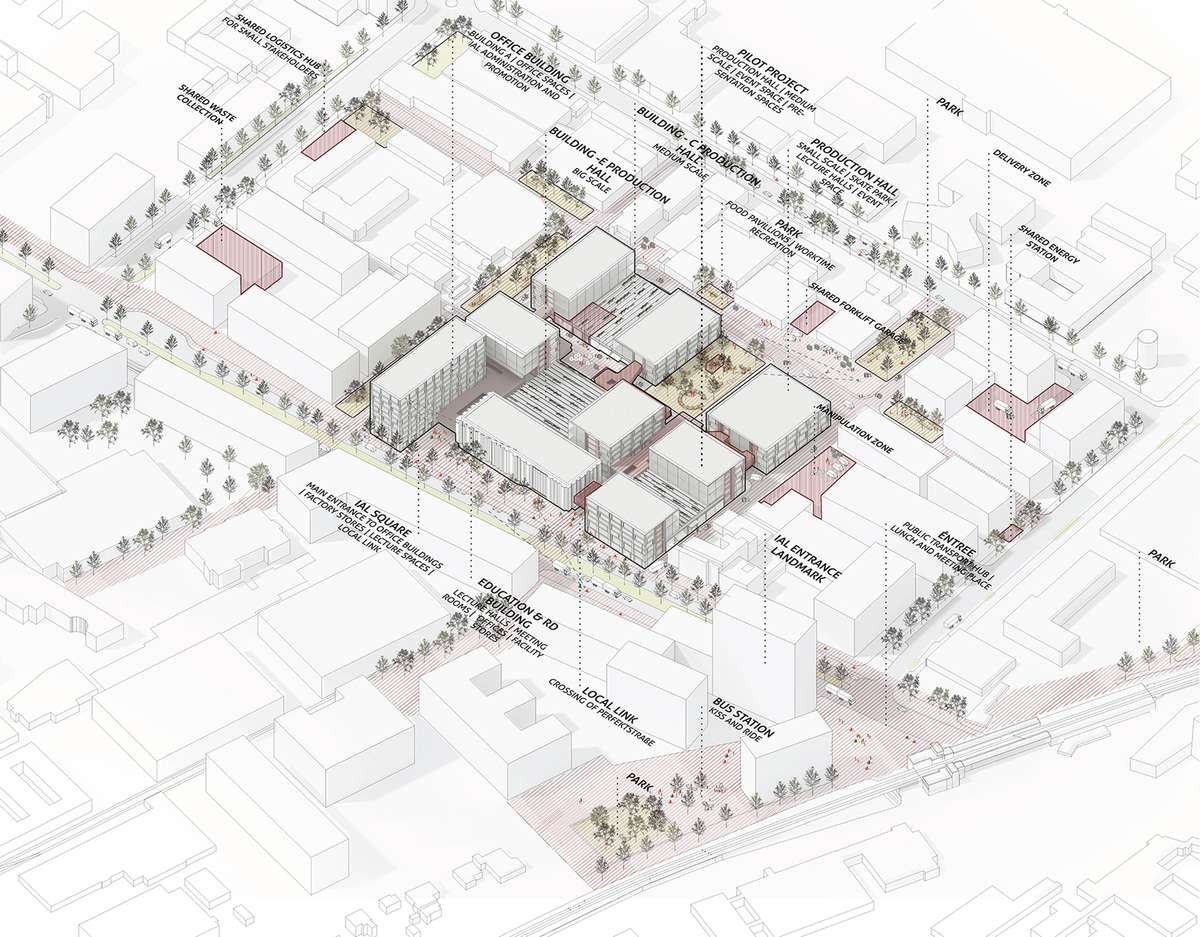
Goals of new industrial area:
- improvement of efficiency through shared use of resources at an urban level to lower the cost of running a business in IAL.
- strengthening integration of all stakeholders, facilities and capacities (for transport of goods and people) to promote synergy.
- increasing density and diversity of uses through new building typology to improve sharing potential.
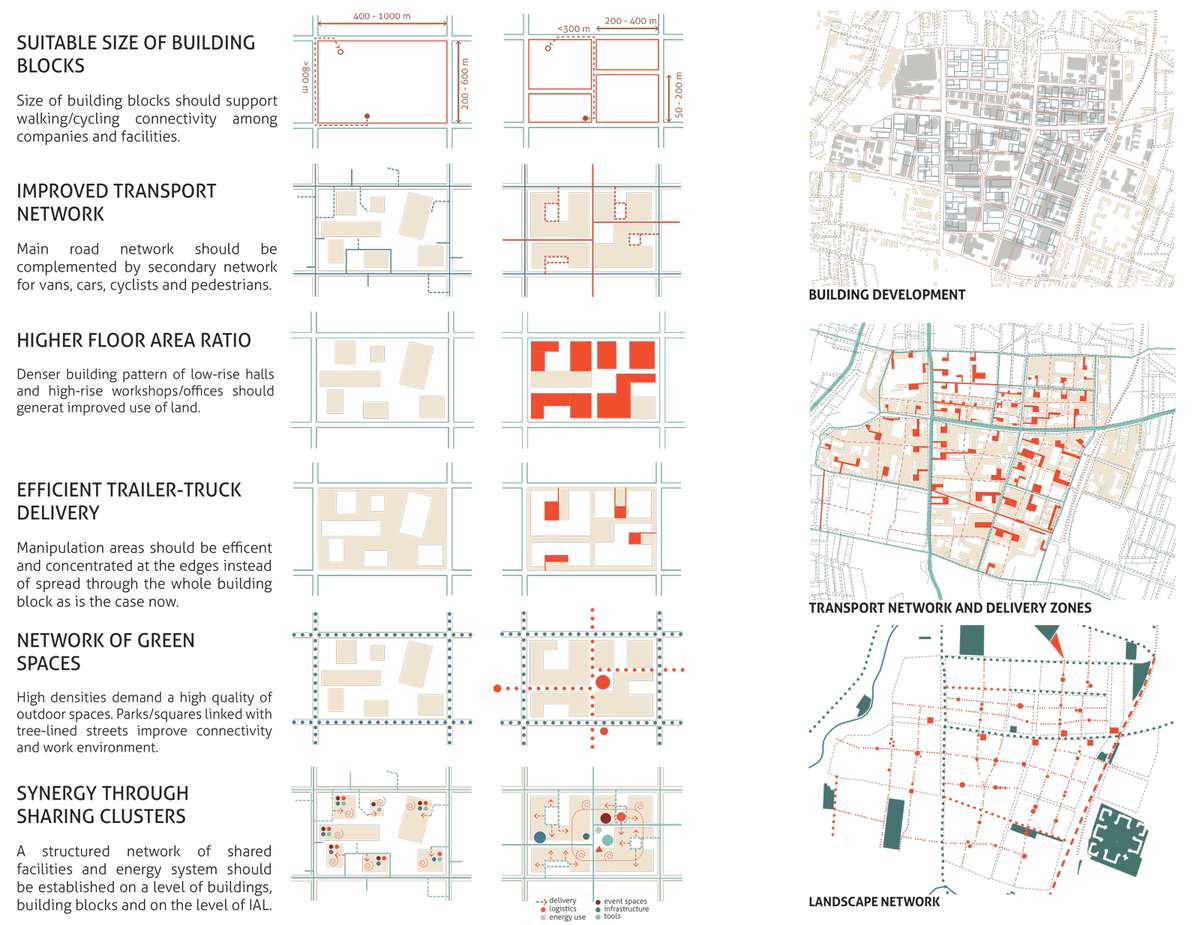
Urban measures that could establish a new productive neighbourhood.
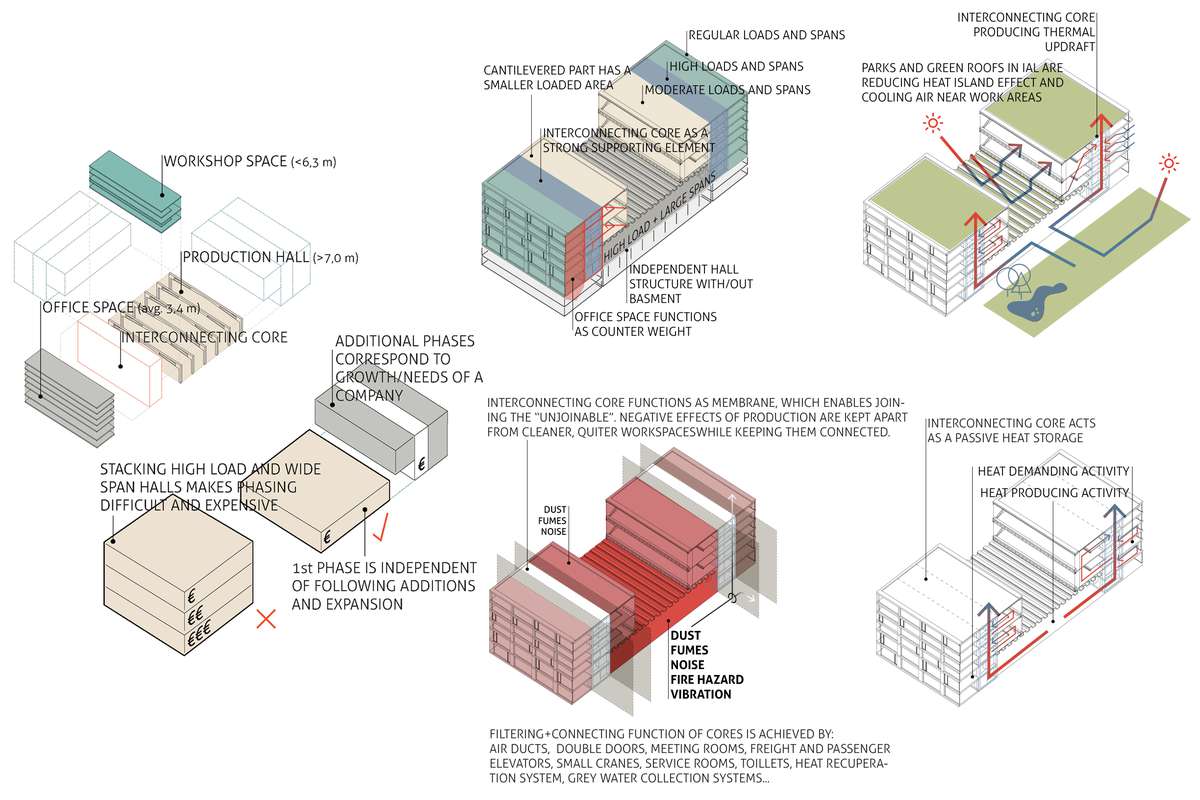
New typology that is based on:
- flexibilty of growth,
- combining already established building parts,
- joining the un-joinable by introducing new core as a connector and a buffer.
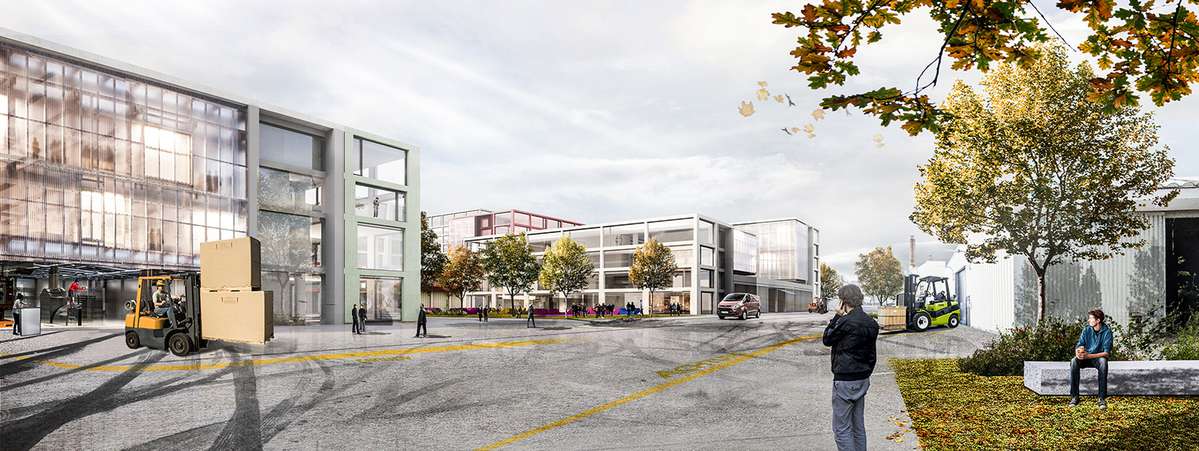
New productive courtyard, both social and productive space.
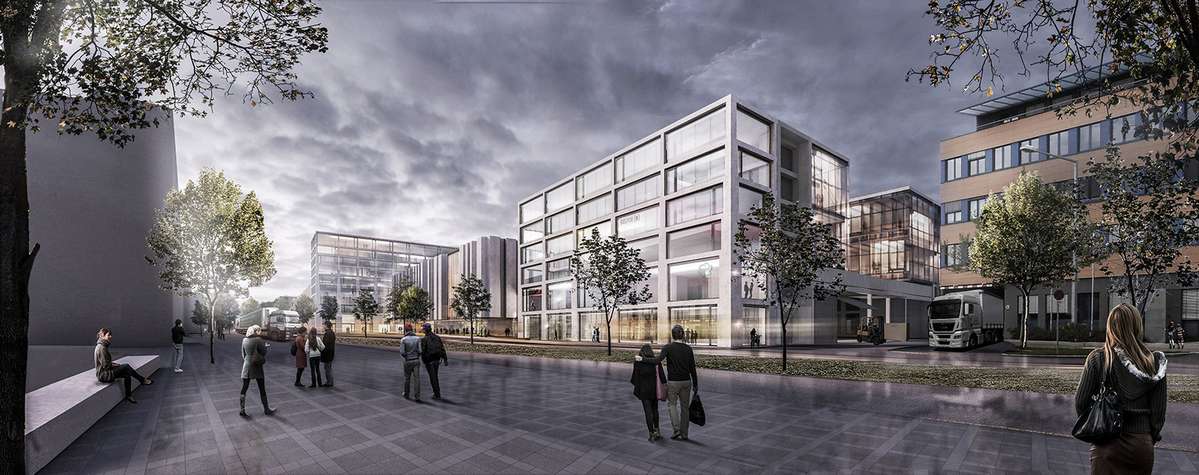
Production makes the city
Production makes the city

- Systemic changes
Social and environmental issues are demanding of us to preserve and reintroduce productive activities in the cities. The question: how the new urban and architectural typology of industrial buildings on one hand could improve the possibilities of new industrial trends, relocalize the production-consumption loop and on the other hand enable small scale production to remain active.
The answer:
- to increase common and shared resources at an urban scale (from energy production and use to shared spaces and tools)
- to improve possibility of higher densities of land use by using new type of buildings that enables combining usually un-combinable uses (loud and quiet, dirty and clean, small and large scale…).
Higher density and diversity combined with improved mobility, structured common spaces and a network of green spaces would create an attractive urban area with specific qualities, that would be lively 24-7 and would complement the quality of living areas around it and beyond.
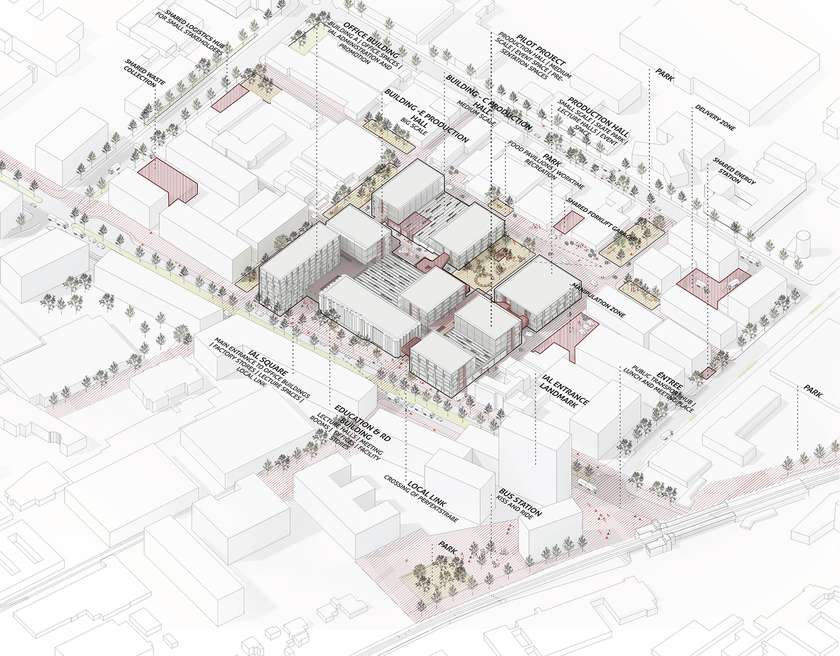
Goals of new industrial area:
- improvement of efficiency through shared use of resources at an urban level to lower the cost of running a business in IAL.
- strengthening integration of all stakeholders, facilities and capacities (for transport of goods and people) to promote synergy.
- increasing density and diversity of uses through new building typology to improve sharing potential.
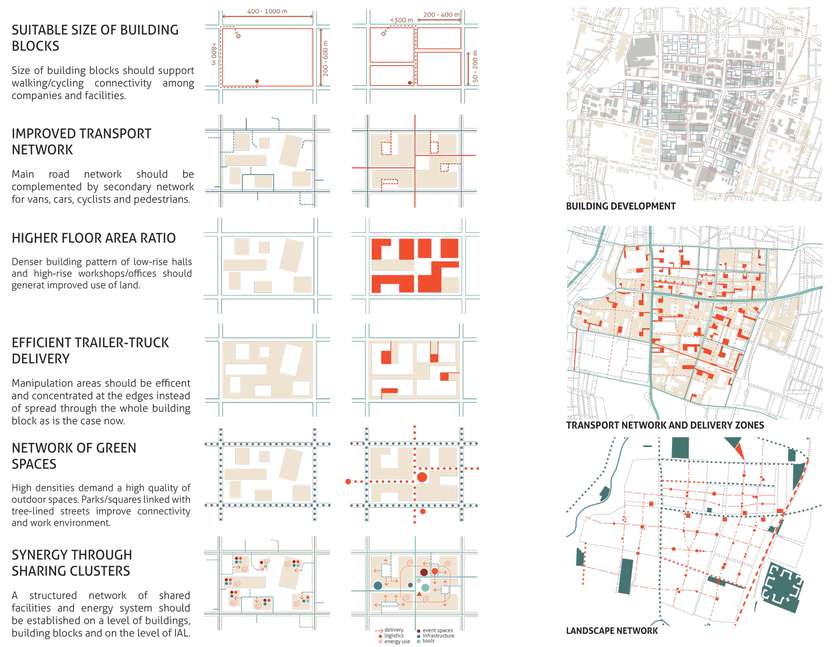
Urban measures that could establish a new productive neighbourhood.
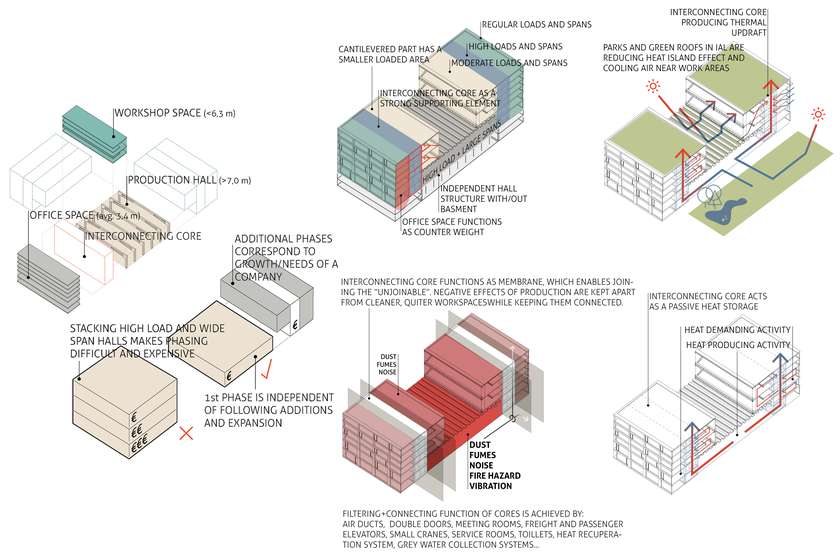
New typology that is based on:
- flexibilty of growth,
- combining already established building parts,
- joining the un-joinable by introducing new core as a connector and a buffer.
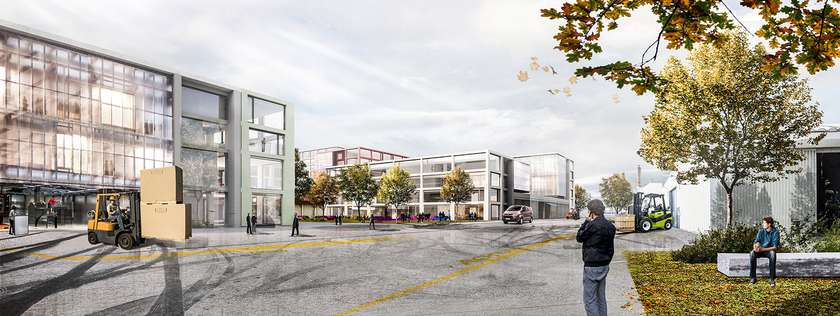
New productive courtyard, both social and productive space.
